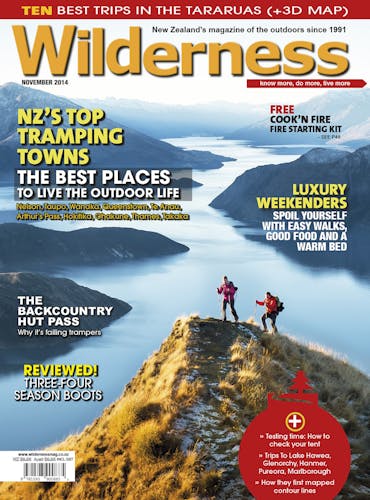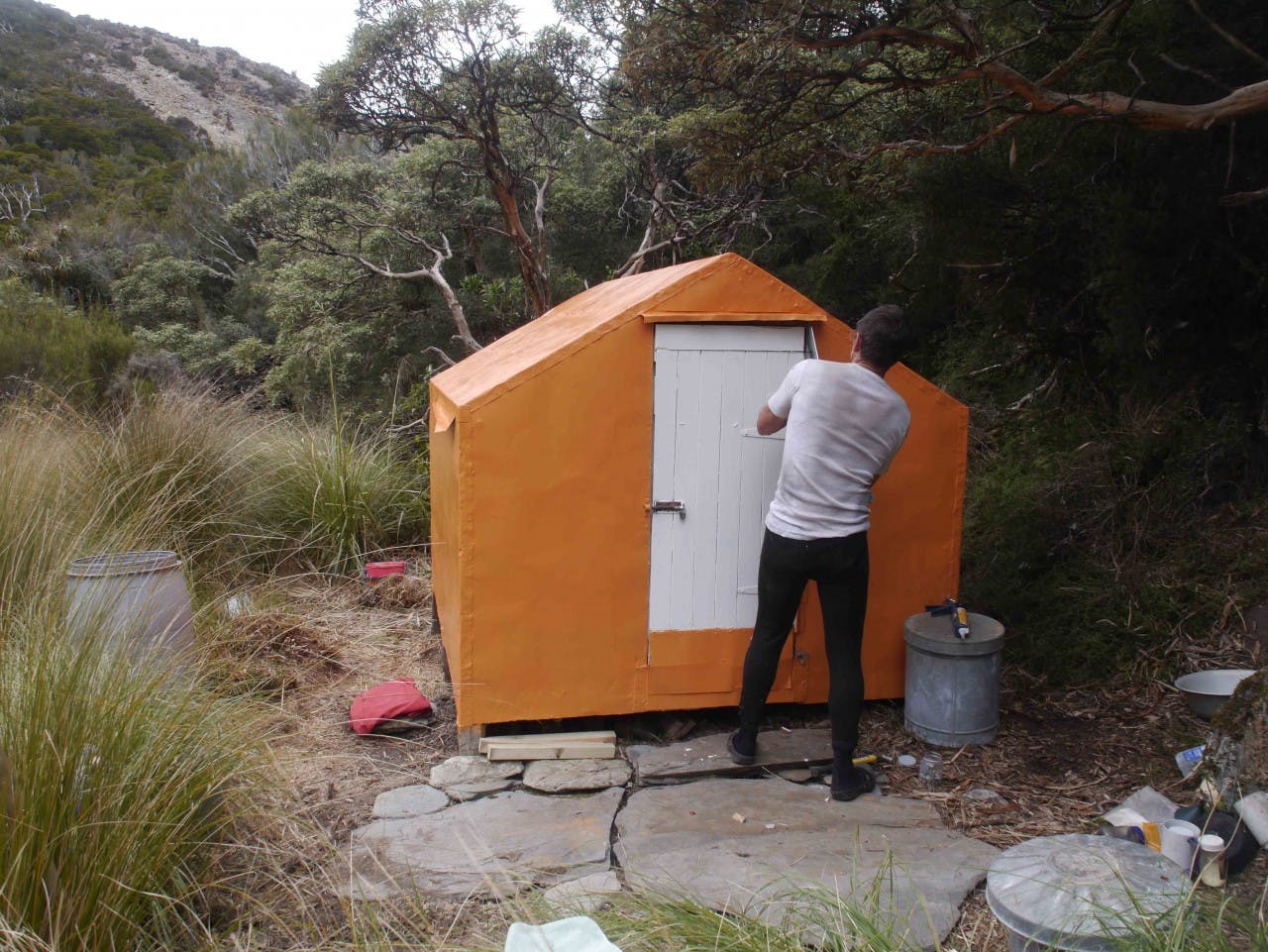Robin McNeill, president of the Federated Mountain Clubs of New Zealand, explains the Conservation Partnership Fund
Until now, trampers who considered DOC had forgotten about their favourite remote hut have been largely restricted to leaving curt notes in the hut book, or writing to the department. There is little joy in that and, often, even less profit. Largely behind the scenes and over many years, Federated Mountain Clubs (FMC) has advocated to DOC for improved maintenance for backcountry huts and tracks. The trouble is that DOC’s budget has seldom allowed the luxury of sustained work on the most remote facilities.
A few activists, most notably those in the loosely organised Permolat group, just took on the work themselves, with and without DOC sanction. Doing work on your own will achieve good results, but when a heavy lift, or expensive items are needed, some real money is required and most trampers baulk at paying $2000 for a helicopter, let alone as much again for a load of building materials to do up a hut.
Spotting an opportunity earlier this year, key senior DOC staff brought together FMC, New Zealand Deerstalkers Association and Trail Fund New Zealand to form the Outdoor Recreation Consortium to make a joint bid to the Community Conservation Partnership Fund (CCPF). The bid was viewed favourably by the Minister of Conservation, Dr Nick Smith, who granted $700,000 to the consortium in what is possibly the biggest game-change for backcountry recreationalists since the old New Zealand Forestry Service started building huts.
The Outdoor Recreation Consortium is now able to fund volunteer projects to maintain huts and tracks on public conservation land that are open for public use. There is, of course, a preference for funding those projects that look after remote huts and tracks rather than in the front country and there is room for funding new facilities. It is anticipated that most of the money will be spent on helicopters and helicopter loads.
In this light, the money available to volunteers through the CCPF empowers trampers to look after huts and tracks, and to feel a sense of joint ownership. In short, the fund makes trampers a truly collaborative partner with DOC.
Trampers will have a different approach to DOC when it comes to working on huts and tracks: DOC has a priority list of assets that is used to most efficiently direct the department’s maintenance effort; in contrast, the consortium will only be able to fund those projects where volunteers want to work, or consider important. For this reason, the consortium will not necessarily fund the best possible projects, but it will fund projects that are good enough to warrant effort.
The consortium has spread funding bids according to the predominant users: mountain bike trail applications go to Trail Fund NZ, while huts and tracks applications go to NZDA for hunting huts, or FMC for tramping facilities. Anyone can apply for funding, not just members of the consortium. The consortium also distributes funds to other outdoor user groups such as 4WD and horse riding. To allocate FMC’s share of the CCPF, FMC has established a Huts and Tracks Committee, comprising Geoff Spearpoint, John Ombler, Conway Powell and me. The committee can approve projects up to $5000 and will have monthly funding rounds. Larger grants will be approved by the FMC Executive every three months or so.
Some DOC staff are, understandably, a little nervous about how the CCPF projects will affect their rohe and their staff. Both DOC and the consortium are keen to ensure that everyone is kept informed about who is doing what. There is no point in a volunteer working party arriving at a hut to discover that DOC staff have just done it up. There will be the occasional teething problems, but the goodwill between DOC and FMC will ensure that they can be quickly and amicably sorted out.
While the old NZFS huts are pretty basic and the problems with them are well known by those who look after them, newcomers to this sort of work may not have the experience to get started. DOC staff are in a good position to give some guidance. What DOC staff and we volunteers will have to get used to is that it is likely some track and hut work undertaken may not be up to the standards expected of professionals. We take the view that any reasonable effort is better than no effort – at worst, a revisit may be necessary.
In addition to DOC staff being able to provide guidance, the consortium has established a website (hutsandtracks.org.nz) where it is intended to pool knowledge and provide funding application forms for downloading. There is also a Facebook page.
We now need you to think about your favourite huts and tracks and consider if you want to do them up, or look after them. We expect that the CCPF will be available for the next three years, so an immediate response is not required, but equally you don’t want to leave it until it is too late.
– Robin McNeill is the president of Federated Mountain Clubs of New Zealand







